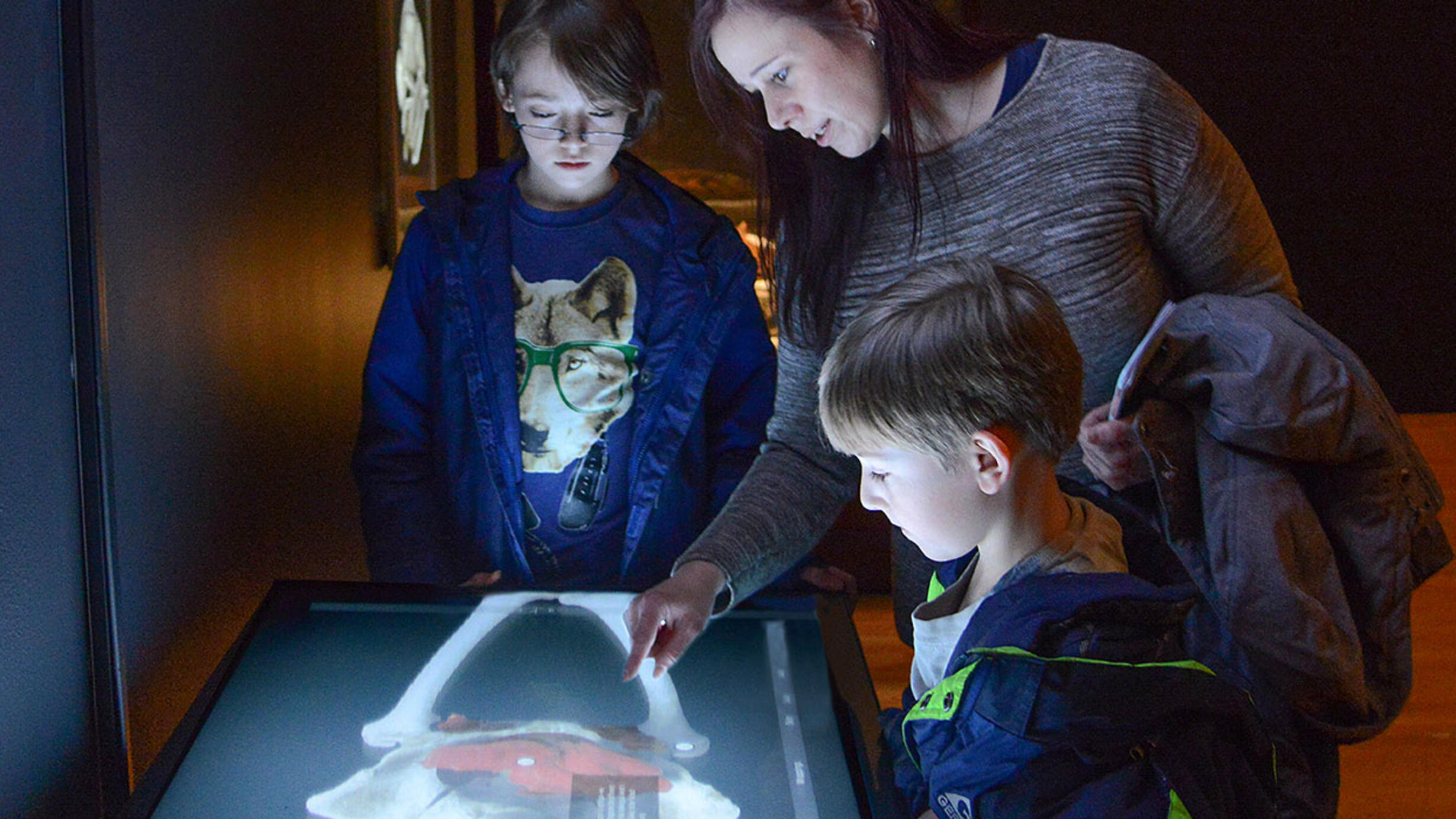Mummies in Egypt
Part of the Mummies exhibition.
 At interactive digital touchscreens, visitors to Mummies virtually “unwrap” Egyptian and Peruvian mummies, revealing figurines and other burial offerings found within.
At interactive digital touchscreens, visitors to Mummies virtually “unwrap” Egyptian and Peruvian mummies, revealing figurines and other burial offerings found within.©AMNH/R. Mickens
Mummies are inextricably linked in our imagination with ancient Egypt, and not without reason. Mummification was practiced for thousands of years in Egypt and was long considered a key step in a person’s journey to the afterlife.
A6-Vanderhoops_quote
Egyptian mummies were prepared using a detailed process that included removing many of the internal organs, desiccating the body in a drying salt, and wrapping the preserved body in linen before placing it in a wooden coffin, like this one. The painted coffin (#30023) below, and the mummy that was inside it, are both featured in Mummies.
© 2015 The Field Museum, A115218d_003C, photographer John Weinstein
Grave robbing was a problem in ancient Egypt, but coffins of limestone made the grave more difficult to open or damage. While most people couldn’t afford one, wealthier Egyptians sometimes paid for the added security. The fragment below is from a limestone coffin, also called a sarcophagus, that would have held a wooden coffin and, inside that, a mummy. The full sarcophagus would have weighed several thousand pounds.
© 2015 The Field Museum, A115213d_017A, photographer John Weinstein
Egyptians believed that the liver, lungs, stomach, and intestines needed to be preserved because the person would need all their body parts in the afterlife. The organs were placed in a small stone or wood chest divided into four compartments or into canopic jars like the ones pictured below. Each jar features a removable top carved to represent one the four Sons of Horus, deities who protected the organs inside and served the dead. The jackal-headed jar, for instance, would have held a person’s stomach that had been carefully dried and wrapped in linen.
© 2015 The Field Museum, A115240d_002A, photographer John Weinstein
Archaeologists have uncovered cemeteries containing millions of animal mummies. They weren’t pets—they were raised in large quantities to be mummified, then sold as religious offerings. Most Egyptian gods were associated with animals, and many animals were buried in special tombs in honor of the gods associated with them. The mummified gazelle below was probably raised at a temple specifically for the purpose of being mummified and used as a burial offering.
© 2015 The Field Museum, A115212d_007A, photographer John Weinstein
Visit Mummies Revealed to learn about the noninvasive technologies used in modern research.
Photo credit for lead image: © 2015 The Field Museum, A115218d_027A, photographer John Weinstein
Read more about